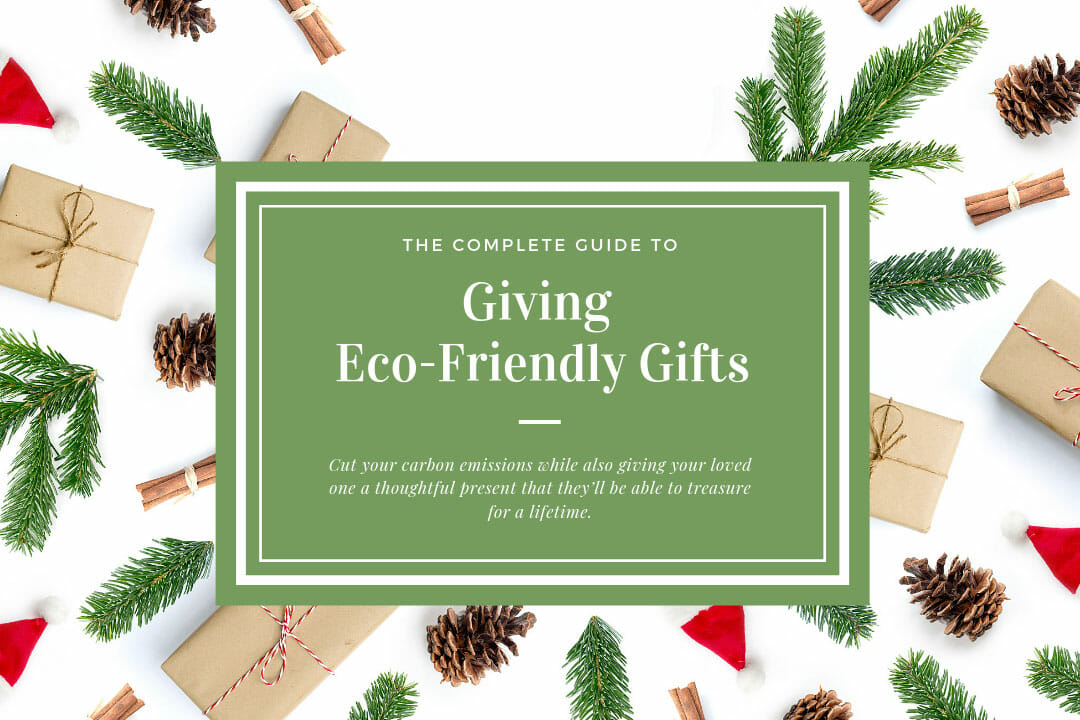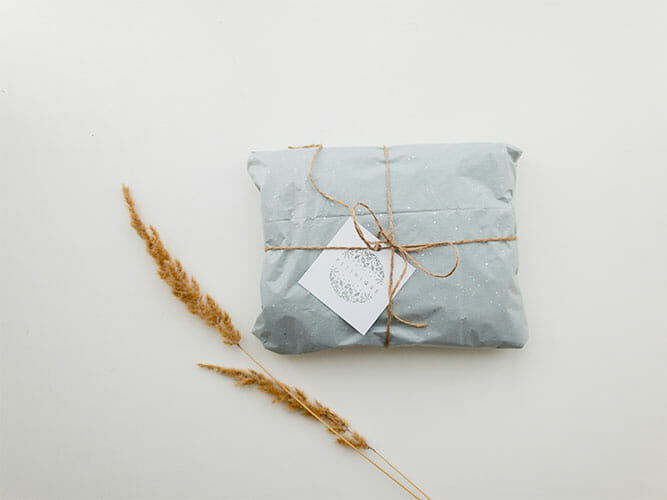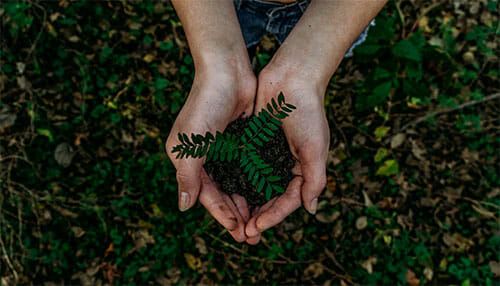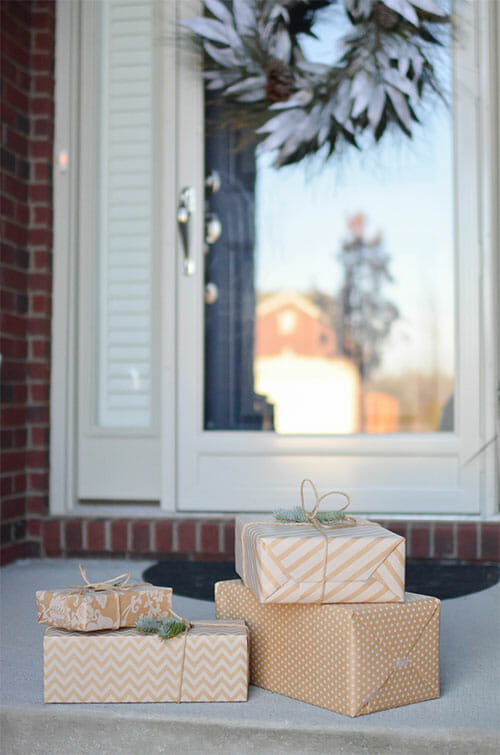
There’s no better way to celebrate the holidays than by picking out the perfect present for your loved ones. But while giving eco-friendly gifts can be a great way to show friends and family how much you care, it’s also often wasteful.
According to EPA estimates, we produce around 25% more waste during the winter holiday season, amounting to an additional one million tons of uneaten food, shopping bags, and wrapping sent to landfills each week.
One of the best ways to cut back waste during your next celebration is by being conscientious about the gifts that you give and making a concerted effort to go green for the holiday season.

What to Look for in an Eco-Friendly Gift
There’s no one-size-fits-all solution when it comes to green gifts. Generally, an eco-friendly present is one that uses fewer resources to produce or that creates less waste than alternative options.
Often, it’s best to avoid cheaply made or mass-produced items and stick with those that are local and that use both sustainable materials and manufacturing processes.
Non Toxic Components
Many products are known to contain harmful chemicals such as lead, chromium, and phthalates. This can even include toys made for young children, many of whom are especially sensitive to these components. They can affect development well into adulthood, leading to severe physical and mental health issues.
Toxic chemicals in products don’t just pose a threat to the immediate user.
When items that contain lead, pesticides, and other hazardous materials enter landfills, these chemicals can seep into the soil, poison bodies of water, and wreak havoc on local ecosystems.
It’s best to look for gifts that stick to using nontoxic materials such as lead-free paint, untreated wood, and biodegradable plastics.
Recycled materials are also a more eco-friendly option than brand new wood, plastic, or metal.
Sustainable Sourcing

You should look for manufacturers and companies that use eco-friendly harvesting and production methods.
For edible gifts, for example, it’s best to seek out organic goods, as they don’t use harmful plant strains or pesticides, and those that are locally produced to cut back on transportation emissions.
Clothing should be made out of eco-friendly and biodegradable fibers such as hemp, bamboo, and organic cotton.
One of the best ways to see if an item is sustainably sourced is to look for a Fair Trade certification.
Fair Trade is a global movement driven by the idea of seeking greater equality on the international trade market, helping workers to earn a fair wage while protecting the environment.
You can find food, coffee, clothing, and more items that are certified as Fair Trade.
Minimal Packaging
As every parent knows, the packaging of most toys can be a challenge. There are twists to untie, twine to cut, and plastic casings to remove.
While all of this packaging can make for an exciting unveiling, it also creates a disproportionate amount of waste.
When buying a gift, it’s best to look for those in smaller boxes and with minimal packing materials.
If the item is delicate or breakable, look for those that are packaged using sustainable, biodegradable, or recycled materials.
Quality and Durability
No matter how eco-friendly a product might be, green materials will do little good if it has to be thrown out and replaced every few months.
It’s better to spend more on a robust, high-quality item rather than opting for cheap or subpar materials.
When buying a gift, it’s best to check the online reviews thoroughly. Look for a model that’s not only made of eco-friendly materials but one that will last for years.
That way, you can help to keep landfills clear of unnecessary debris.
Waste-Reducing Functions
Sustainable materials aren’t the only thing to look for in an eco-friendly gift. You can also give people something that will help them to cut their household carbon emissions and live a greener life.
Waste-reducing gifts are those that help people to live a greener lifestyle going forward.
They eliminate unnecessary or wasteful items, keeping temporary and disposable things from taking up space in landfills.
A sturdy water bottle or travel mug, for example, can help people to cut back on waste from used plastic bottles and cardboard coffee cups.
Charitable Contributions

Some companies will donate a certain percentage of what you pay for a gift to a charitable organization. Newman’s Own, for example, donates all proceeds to charitable causes, including the Safe Water Network and SHOFCO (Shining Hope for Communities).
You can also opt to donate directly to a charity in a loved one’s name instead of giving a physical gift.
Most people will appreciate a donation given to a cause that they support, whether that means giving to wildlife foundations, health and community initiatives, homeless programs, and more.
Making Your Own Eco-Friendly Gifts
If you’re looking to save money or simply can’t find just the right gift for someone, you can always go the DIY route.
There are plenty of ways that you can make your own eco-friendly gift to give to a loved one.
Recycling Presents
Giving gifts doesn’t always mean a trip down to the store. Sometimes, you may find the perfect item hidden in your home.
An unused item of clothing, an unopened appliance, or a decorative piece hidden up in the attic can all make the ideal gift for a loved one.
You can also get creative and recycle home goods to create an entirely new gift.
Old blankets, fabrics, and clothing can be used to make a quilt, for example, while a refurbished heel can make an attractive wine holder.
Buying Second-hand Items
If you’re looking for something affordable and eco-friendly, you don’t necessarily have to opt for something your family may recognize from the parlor.
You can also find perfectly good second-hand items online, at a local thrift shop, or from a charity organization.
Buying used items is often cheaper than buying new, and it helps to reduce manufacturing waste while freeing up landfills.
Creating a New Look
For the fashionistas in your life, you can create unique jewelry and items of clothing by recycling goods around the home.
For example, you can convert things such as magazine covers and old plastic items into beads that can be used in necklaces, bracelets, earrings, and more. Old or worn clothing and blankets can be salvaged to make anything from jackets to slippers.
Crafting Soaps and Spa Sets
Toiletries are a popular gift choice, but they’re not always the most eco-friendly option. Many products that you find in-store or in the pharmacy contain ingredients that may be toxic to your body or the environment.
Fortunately, it’s relatively easy to make high-quality soaps, oils, cleansers, and more using raw organic ingredients.
You can ensure that each item that goes into your final product is safe, gentle, and environmentally friendly. Common ingredients used in homemade spa sets include:
- Coconut oil: This oil helps to smooth and soften dry skin. It also has antimicrobial properties that help to reduce the appearance of blemishes and blackheads.
- Beeswax: Anti-inflammatory properties help to keep skin looking supple and smooth while providing a protective barrier against the elements.
- Honey: Another ingredient with antibacterial properties, honey has small granules that help to buff and remove dead skin cells while soothing and moisturizing.
- Sugar: This is a safe, natural exfoliant alternative to dangerous microplastics.
- Olive Oil: While this ingredient isn’t ideal for those prone to acne, it’s full of antioxidants and can help to maintain the protective barrier of sebum on the skin.
- Essential oils: Extracts such as mint and rose water not only smell nice, but many have aromatherapeutic properties.
- Fruits: Many fruits such as papaya and lemon have natural enzymes that can help to kill bacteria, reduce unwanted skin oils, and moisturize beneath the surface.
Cooking Tasty Treats
Food makes an excellent gift for just about anyone. If your loved one is into fine foods such as chocolate and charcuterie, you can save money and eliminate wasteful packaging by whipping up a gift in your kitchen.
Fresh, homemade goodies will almost always taste better than anything you’ll find in-store. What’s more, you can control the ingredients.
If your loved one has allergies or is on a special diet, you can eliminate unwanted items without any trouble.
You can also stick to organic, locally sourced products to help make a more environmentally friendly treat.

It isn’t always easy to come up with the perfect gift for a loved one. You have to choose something centered around their individual needs, wants, and hobbies.
Here are some eco-friendly gift ideas to suit a variety of common interests.
Children and Toddlers
Children aren’t necessarily picky when it comes to toys. Many kids will welcome any new toy, homemade or otherwise.
If you’re looking to go the DIY route, you can give children simple gifts such as sock puppets, scrap wood furniture, or hand-sewn outfits from their favorite show. If you want to buy them something, make sure to look for an item with minimal packaging and nontoxic components.
New Parents
Either homemade items or safe, store-bought toys are a good gift idea for new parents. Reusable diapers can also make an excellent present. Around 20 billion disposable diapers are sent to landfills each year in the U.S. alone, creating around 3.5 million tons of waste.
A gift of eco-friendly cloth diapers can help new families to cut back on their household waste and will also save parents money in the long run.
You should look for brands that avoid harsh chemicals, perfumes, and dyes.
Shoppers
If you have a loved one who enjoys shopping, you may find it difficult to think of the perfect gift. For someone who has it all, sometimes a gift card is the best option.
This sort of present produces minimal waste and ensures that your friend, coworker, or family member gets a gift that they’ll actually use.
If you’re looking for something a little bit more personal, a reusable shopping bag can make a unique and affordable present.
You can find flat-bottomed totes designed to hold groceries, foldable nylon bags that can fit in a pocketbook, or a durable plastic version of a standard shopping bag.
Wrapping Without Waste

One of the biggest sources of waste during the holidays comes from wrapping paper.
Most are designed to be thrown away, and while wrapping paper may be biodegradable, it can still take up a significant amount of space in a landfill for years.
One of the most eco-friendly things that you can do when giving gifts is to minimize the amount of wrapping and packaging that you include.
When buying or making gifts, don’t go out and purchase a gift box or wrapping paper. Try to reuse and recycle whatever you can when it comes to presentation. Here are some popular alternatives to traditional wrapping jobs:
- Fabric gift wrapping: Instead of using paper, opt for fabric instead. People will be less likely to throw it away and may even find another use for it in the home.
- Clay pots: A simple pot makes an attractive and unique gifting container, and it can be reused time and time again in the garden.
- Old bags, newspapers, or magazine pages: Not only will you be recycling old paper material instead of throwing it away, but you can also find words and images targeted at your giftee.
- Reusable bags and boxes: If you want to keep your wrapping traditional, you can find printed gift bags and boxes that are designed to be reused to help cut back on waste.
- Recycled paper: You don’t necessarily have to deny yourself the satisfaction of seeing a loved one tear into a gift. You can find eco-friendly wrapping papers in some stores that are made from entirely recycled materials.
The Bottom Line on Eco-Friendly Gifts
By giving green gifts the next holiday that rolls around, you can do your part to help cut waste consumption and reduce your family’s impact on the environment.
Giving eco-friendly gifts can be as simple as swapping out your preferred wrapping paper for something recycled or even homemade.
By being conscientious about your gifts, you can work to cut your carbon emissions while also giving your loved one a thoughtful present that they’ll be able to treasure for a lifetime.

